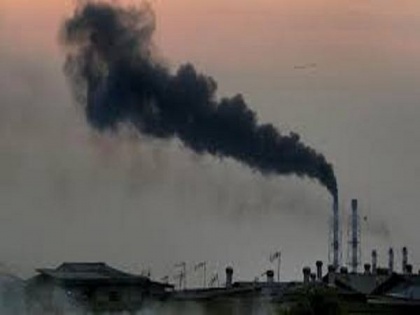Human activity caused long-term growth of greenhouse gas methane
By ANI | Published: January 29, 2021 08:30 PM2021-01-29T20:30:52+5:302021-01-29T20:57:25+5:30
A study by an international team, published in the Journal of Meteorological Society of Japan, provides a robust set of explanations about the processes and emission sectors that led to the hitherto unexplained behaviors of CH4 in the atmosphere.

Human activity caused long-term growth of greenhouse gas methane
A study by an international team, published in the Journal of Meteorological Society of Japan, provides a robust set of explanations about the processes and emission sectors that led to the hitherto unexplained behaviors of CH4 in the atmosphere.
The growth rate (annual increase) of CH4 in the atmosphere varied dramatically over the past 30 years with three distinct phases, namely, the slowed (1988-1998), quasi-stationary (1999-2006) and renewed (2007-2016) growth periods. No scientific consensus is however reached on the causes of such CH4 growth rate variability.
The team, led by Naveen Chandra of National Institute for Environmental Studies, combined analyses of emission inventories, inverse modeling with an atmospheric chemistry-transport model, the global surface/aircraft/satellite observations to address the important problem.
They show that reductions in emissions from Europe and Russia since 1988, particularly from oil-gas exploitation and enteric fermentation, led to the slowed CH4 growth rates in the 1990s, where reduced emissions from natural wetlands due to the effects of Mount Pinatubo eruption and frequent El Nino also played roles.
This period was followed by the quasi-stationary state of CH4 growth in the early 2000s. CH4 resumed growth from 2007, which were attributed to increases in emissions from coal mining mainly in China and intensification of livestock (ruminant) farming and waste management in Tropical South America, North-central Africa, South and Southeast Asia.
While the emission increase from coal mining in China has stalled in the post-2010 period, the emissions from oil and gas sector from North America has increased. There is no evidence of emission enhancement due to climate warming, including the boreal regions, during our analysis period.
These findings highlight key sectors (energy, livestock and waste) for effective emission reduction strategies toward climate change mitigation. Tracking the location and source type is critically important for developing mitigation strategies and the implementation the Paris Agreement.
The study also underlines the need for more atmospheric observations with space and time density higher than the present.
( With inputs from ANI )
Disclaimer: This post has been auto-published from an agency feed without any modifications to the text and has not been reviewed by an editor
Open in app